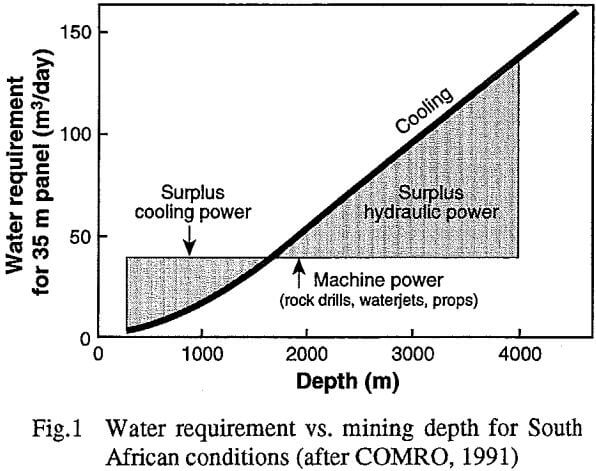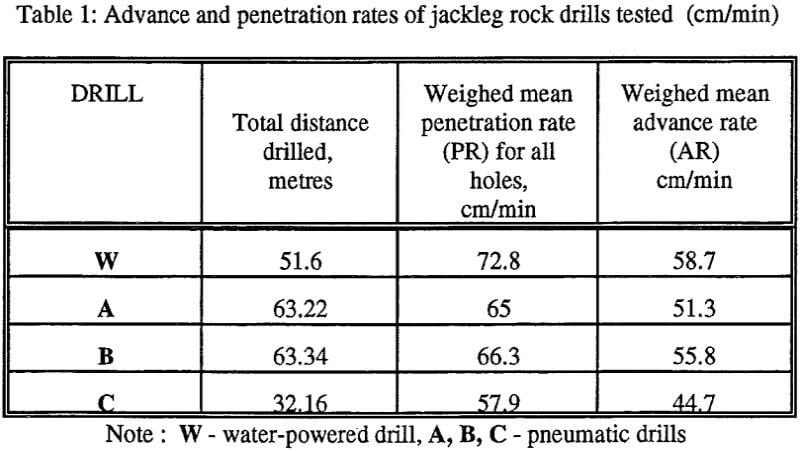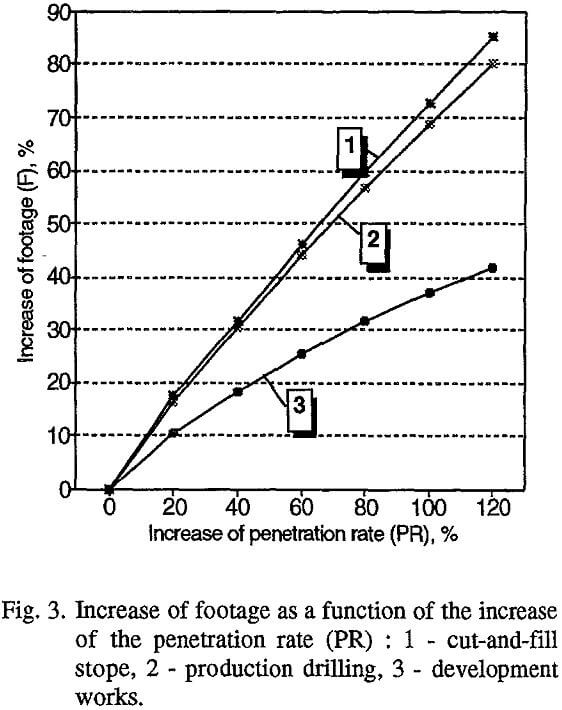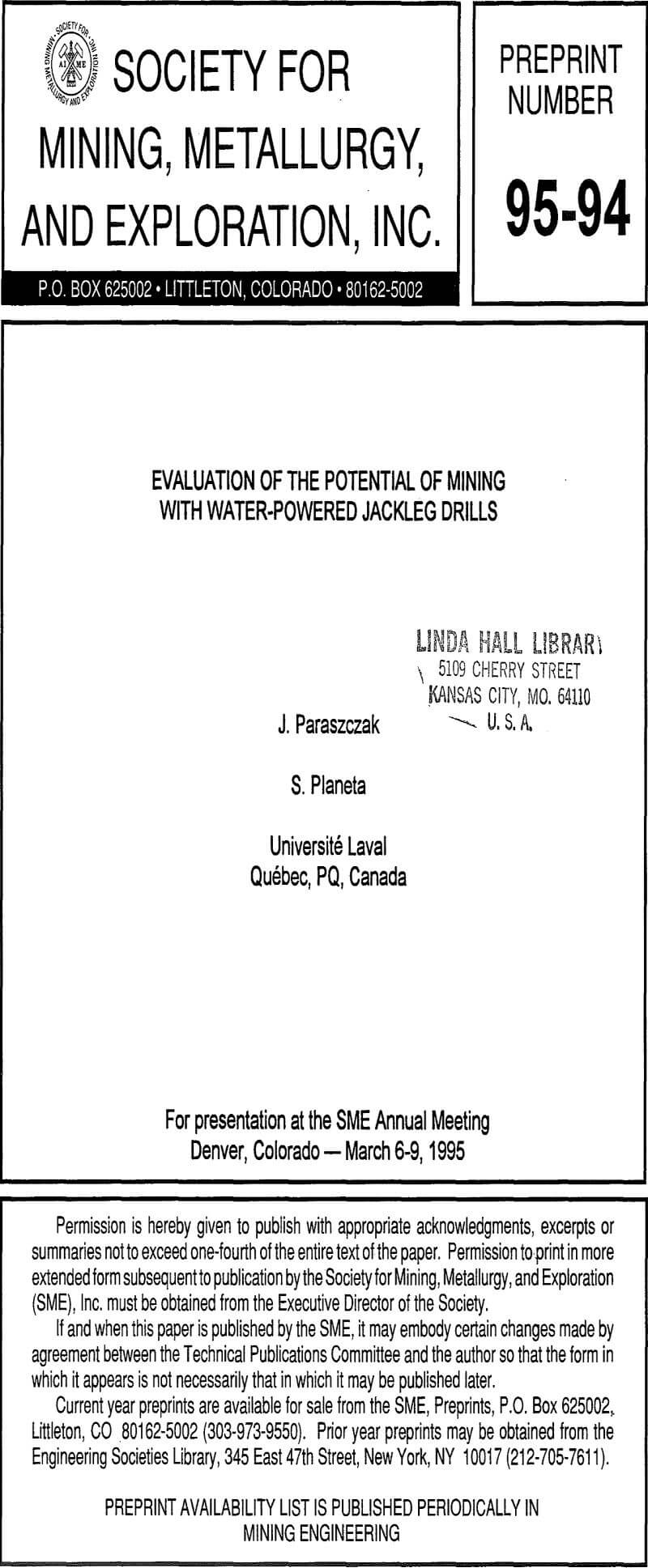The idea of using the energy of water (hydropower) for the purpose of deep-level mining has its origins in South Africa. It stems from necessity and practical considerations. With a constant increase of the depth of mining, ventilation and cooling requirements made it essential to chill the service water sent underground. Water in the shaft columns builds up hydrostatic pressure at a rate of 10 MPa per 1,000 m depth. Instead of being dissipated through energy-recovery and transmission systems where power losses and heat loads are created, this hydrostatic energy may be directly transformed into mechanical work. For South African mining conditions, from the depths of 1,800 m and more the amount of water required to chill the stopes offers a surplus of energy (fig.1). This energy can efficiently power machines such as rock drills, scraper winches, tugger hoists etc.

Contrary to conventional hydraulic rock drills, the latter ones work in an open circuit, so that all the water used to power it, is ejected through exhaust ports. Hydropower drills designed up to date usually run at pressure from 14 to 18 MPa, so allowing for friction loss, natural water- head may be used at the depths below around 1,800 meters. At shallower depths, booster pumps in the shaft or mobile pump units may be applied. Research and testing in the mines West Driefontein and Northam have shown several advantages of water-powered drilling over compressed air drilling. These include (Anon. 1989, Wyllie, 1990, Pearse, 1990, COMRO, 1991, Anon. 1992, Harper, 1992) : faster penetration rates (up to 100%), less unit energy used per meter drilled (up to 12 times), absence of exhaust air/oil mist, reduced noise level, additional cooling effect and lower drilling cost (about 40% less). Following these references the technology of hand-held drilling with pure water has met the projected targets and has contributed to a substantial improvement in mine productivity. These features combined with the effective use of hydroenergy to power other equipment (water-jetting guns, scraper winches, hydraulic props, etc.), seem to prove that water-powered drilling is a very advantageous technical solution for deep South African mines.
Penetration and advance rates
Based on time measurements penetration (PR) and advance rates (AR) were calculated. The summary of results is given in the table 1.

In the terms of weighed mean penetration rate (PR) the water-powered drill have shown barely about 10-15% increase in comparison with pneumatic drills. As for advance rates (except of the drill “C’) the difference in favour of the drill “W” was found even less significant (6-12%). These results were much worse than expected, but there were some factors that may have affected drilling rates of the drill “W” (shorter pusher leg used, lack of experience of the miner operating it, etc.). Following the analysis done with respect to a pusher leg length it was estimated that overall difference in penetration rate may reach 30% in favour of water-powered drill. Further increase may be achieved using higher water pressure. Following the information from manufacturers the increase of water pressure from 15 to 18 MPa may result in the 35% increase of penetration rate. At this point however, it should be stressed that pneumatic drills were not operating at their optimal pressure either. This aspect was discussed more in detail by Planeta & Paraszczak (1994). Even if all the factors favourable for the drill “W” are taken in consideration still the results obtained are well below the 100% number claimed by South African sources.
Potential Benefits of Water-Powered Drilling
For these reasons advance rate or footage rather than penetration rate should be used to evaluate drilling technologies. In order to determine the relationship between penetration rate and footage, time studies have been realized in three mining sites during different drilling operations with jackleg drills.
These were:
- production drilling in cut-and-fill stope,
- production drilling in the vicinity of main drift,
- development work (starting a raise).
Time study made it possible to estimate the amount of time necessary to move a drill from one hole to another, to change bits and drill steels per each 2.44 m hole. The following assumptions were made for further calculations:
- overall time available for drilling (net drilling time) is constant and independent from penetration rate (PR) achieved, time to move the drill from one hole to start a new one is constant and independent from penetration rate,
- bits are changed after a constant number of meters drilled (i.e. the faster we drill the more often bits are changed),
- the faster we drill, the more often drill steels are changed.
Based on that the appropriate constant values were determined for each case considered. Subsequently, footage was calculated for different penetration rates. Results are shown on the figure 3. Point (0,0) at the chart corresponds to the penetration rate achieved with pneumatic drills in real conditions (increase 0%).
It may be noticed that the increase in footage is slower than that of penetration rate. Assuming that water-powered drills are 30% faster than pneumatic ones (following the results of the testing done), depending on the type of drilling work the increase of footage about 15-25% may be achieved. If a penetration rate doubles, footage may increase by 38-70%. These numbers represent potential benefits of water-powered drilling under favourable conditions. It should be stressed that reliability of drills was not taken into consideration.

